Among the various leisure activities that Oregon offers, agate hunting stands out as one of the most thrilling and enjoyable. While agates may have limited monetary value (aside from some exceptional pieces), they can be transformed into stunning jewelry, beads, vases, ornaments, and other artworks. Agates, a type of chalcedony, are considered semiprecious gemstones.
Agate is a concentrically banded form of chalcedony. The term "agate" is also used to describe non-banded chalcedony that contains various types of inclusions, such as moss, plume, or flame agate. Translucent or semitransparent materials with no inclusions, which resemble agates but lack banding, are classified as chalcedony.
What makes agate unique and desirable are its distinctive banding, color patterns, and "impurities."
Composed of silicon dioxide (SiO₂), agate is a translucent or semitransparent, fine-grained microcrystalline or cryptocrystalline quartz. This tough and attractive mineral has excellent working properties, a high hardness of 7 on the Mohs scale, acid resistance, and the ability to take on a beautifully polished surface.
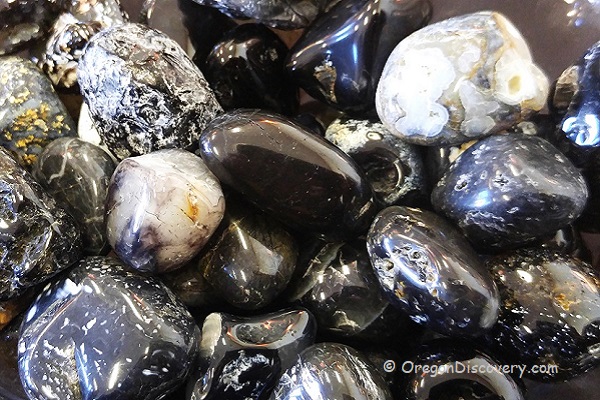
Agate Formation
Most agates formed in cavities and underground veins of ancient volcanic flows, primarily in rhyolite and basalt.
The formation of these cavities dates back to the creation of the continents. Layers of molten lava contained trapped gases, and as the rocks cooled and hardened, the gases escaped through cracks, leaving hollow spaces behind. Over time, these empty cavities were gradually filled with supersaturated silica fluids, leading to active crystallization within. Tiny fibrous microcrystals attached themselves to the sides of the cavity or seam. Various mineral impurities accumulated along these bands, forming the contrasting rings that characterize agates. The balance between silica and mineral impurities resulted in agates with alternating bands.
Agate Varieties
Angel Wing Agate: This rare material has an irregular or sometimes botryoidal (grape-like) surface. When cut, the cross-section often resembles plume agates. It can be found around Graveyard Point, near the Oregon-Idaho border.
Carnelian Agate: Colored by iron oxides, this agate is a translucent reddish-brown or reddish-orange chalcedony. It can be found in rivers, on beaches, and in mountains.
Dendritic Agate: The rarest agate variety, dendritic agate, features tree-like or fern-like patterns formed by mineral impurities locked inside. The base is usually colorless, white, gray, and sometimes purple. It can be found in the Crooked River Area.
Enhydro Agate (Water Agate): These agates contain tiny bubbles of water or air that have been trapped inside for millions of years. Enhydro agates may also have other inclusions and are often found on the Oregon Coast.
Eye Agate: Formed when most of the silica gel drained from the cavity, leaving behind small droplets that crystallized into solid concentric chalcedony known as "eyes." The other layers of silica arranged themselves around the eyes.
Fortification Agate: This agate variety features bands that crystallize into concentric layers, with all bands connecting to each other, creating walls similar to the fortifications of a castle.
Holley Blue Agate: This highly-prized material ranges from translucent light blue to opaque purple. Holley Blue is found in the hills near the small community of Holley, 4 miles from Sweet Home. However, the collecting area is now private property and is closed to the public.
Iris Agate: A rare agate that produces a unique iris effect, showing prismatic colors when held up to the light.
Moss Agate: This rare translucent agate has embedded green mossy or fern-like inclusions. Although Moss Agate lacks the banding pattern typical of true agates, it is still highly valued.
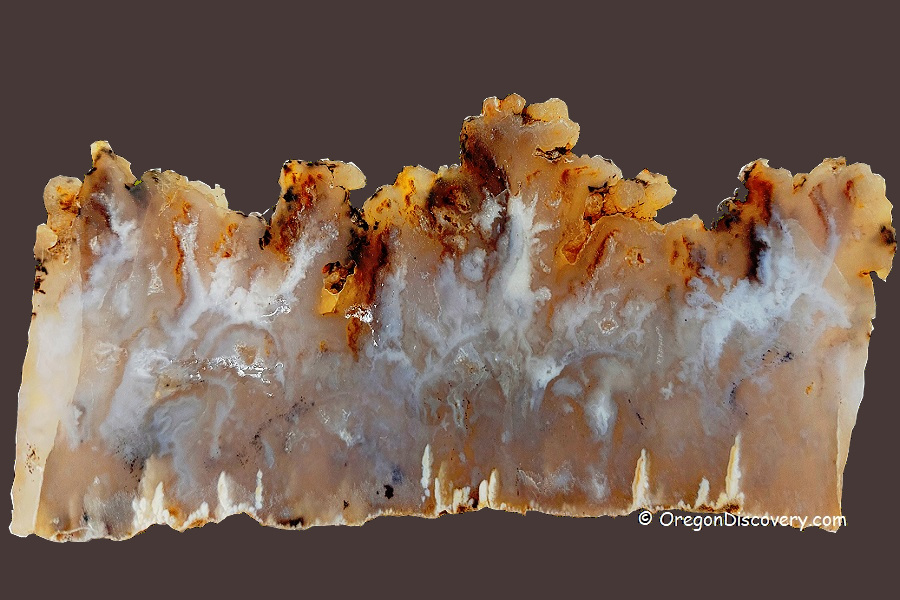
Plume Agate: Another rare variety, Plume Agate contains plume-like mineral inclusions in a variety of colors. This material can be found around Graveyard Point, near the Oregon-Idaho border.
Polka Dot Agate: This translucent material may have white, pale beige, or blue base colors with sharp or spherical dots of various sizes and colors. It is unique to Central Oregon, where it is produced at the Polka Dot Agate Mine.

Sagenitic Agate: This chalcedony contains fine hair or needle-like mineral inclusions embedded within the agate. It can be found on Oregon Coast beaches, in rivers, and in road cuts.
Snakeskin Agate: Named for its surface layer that resembles snakeskin, this translucent mineral forms unusually shaped nodules that are light, beige, or reddish and may contain light concentric bands. It is found in Rome, Eastern Oregon, and near Prineville, Central Oregon.

Oregon Agate Hunting Locations
The best and easiest places to find these colorful gemstones are the Oregon Coast, river and creek gravel bars, and various locations in the high desert and mountains of Central and Eastern Oregon.
Oregon is one of the most popular states for agate hunting, with many public lands where you can add to your gemstone collection. However, before accessing any area and collecting rocks, it’s important to contact local agencies to obtain the most up-to-date information and regulations.
You May Also Like
2. "Oregon Rocks, Fossils Minerals". Josefine County. Oregon Historical Society.
3. Nancy Marie Brown. "How Do Agates Form?". 2001. Penn State University.
4. Dr. H.C.Dake. " The Gem Minerals of Oregon". 1938. Portland, Oregon. Oregon State Department of Geology and Mineral Industries.


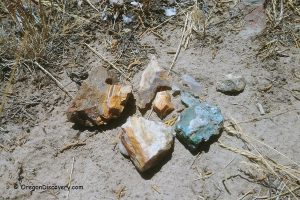
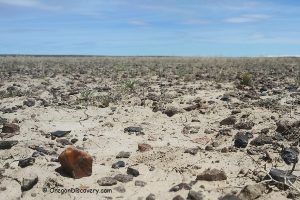
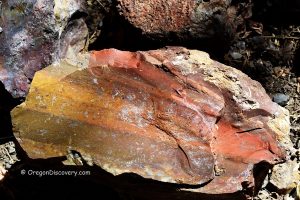
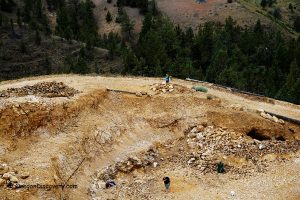


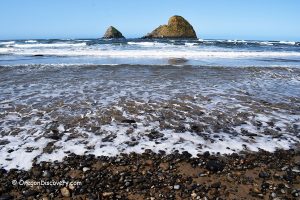
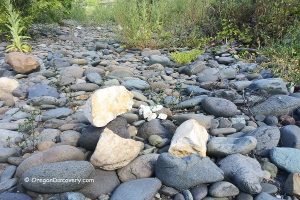
Thank you for this. A friend recently asked me if a small translucent stone I’s found near my home was an agate. “Of course,” I said. “Agate is basically just quartz.” But then I wondered if I was correct.
Yes, it is correct
Saw the picture to your website and it caught my eye. I am trying to find a name for a agate stone I have but not sure it’s any u have on here can u help.
I’m a native Southern Oregonian, 5 generations actually. Im shocked as I’m reading through this post that I’ve found nothing about the agates of southern Oregon. Again I’m native so I’ve been to a few of the places listed. They are nice to see and produce beautiful samples. Not one holds a candle to the quality or quantity of the agates and jasper I find just walking around looking at the mole and ground squirrel mounds. Perhaps its actually a blessing in disguise. Love the post thanks.
Where are some good areas to look in southern Oregon?